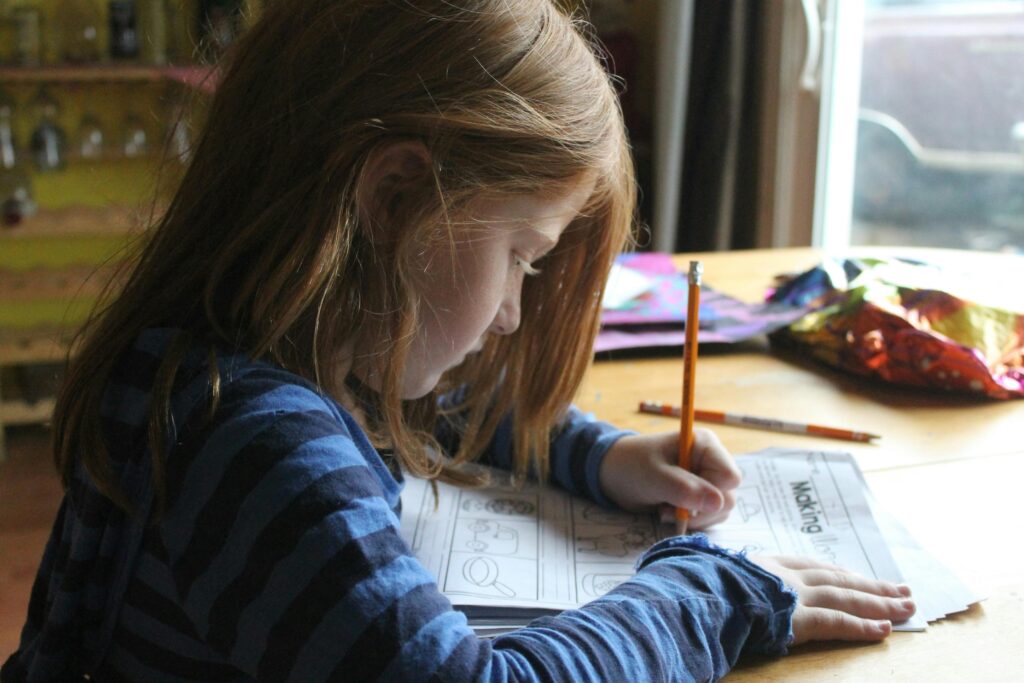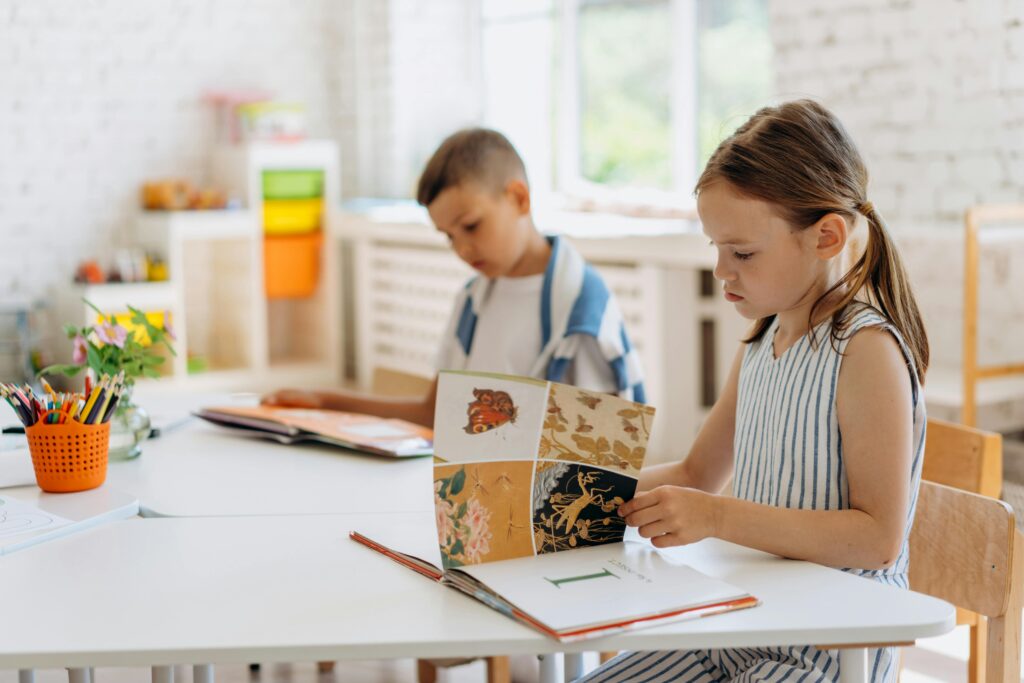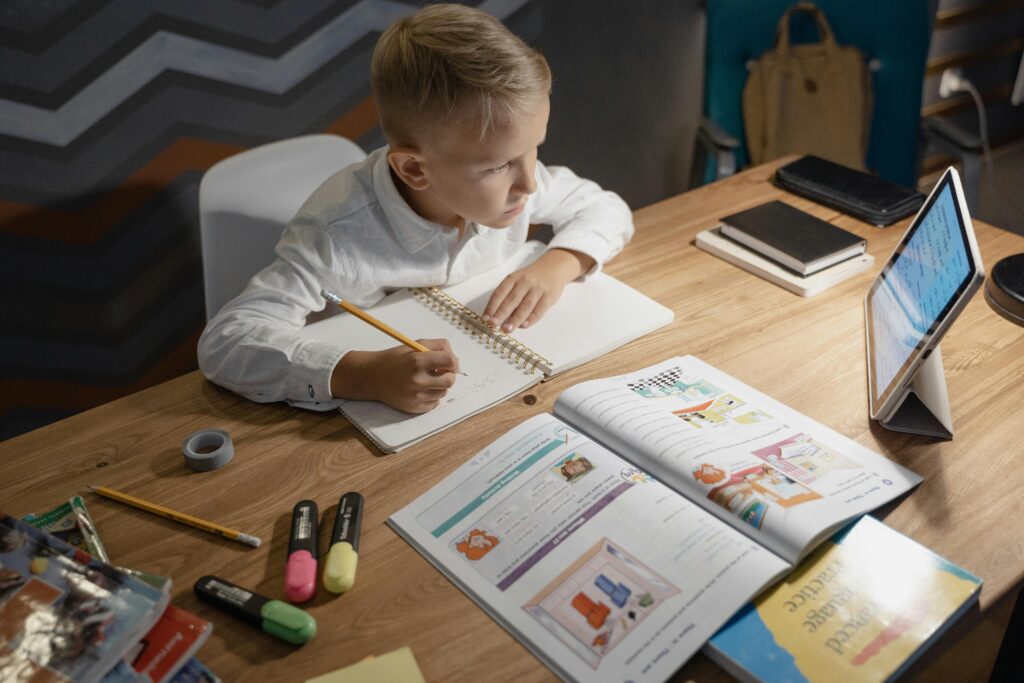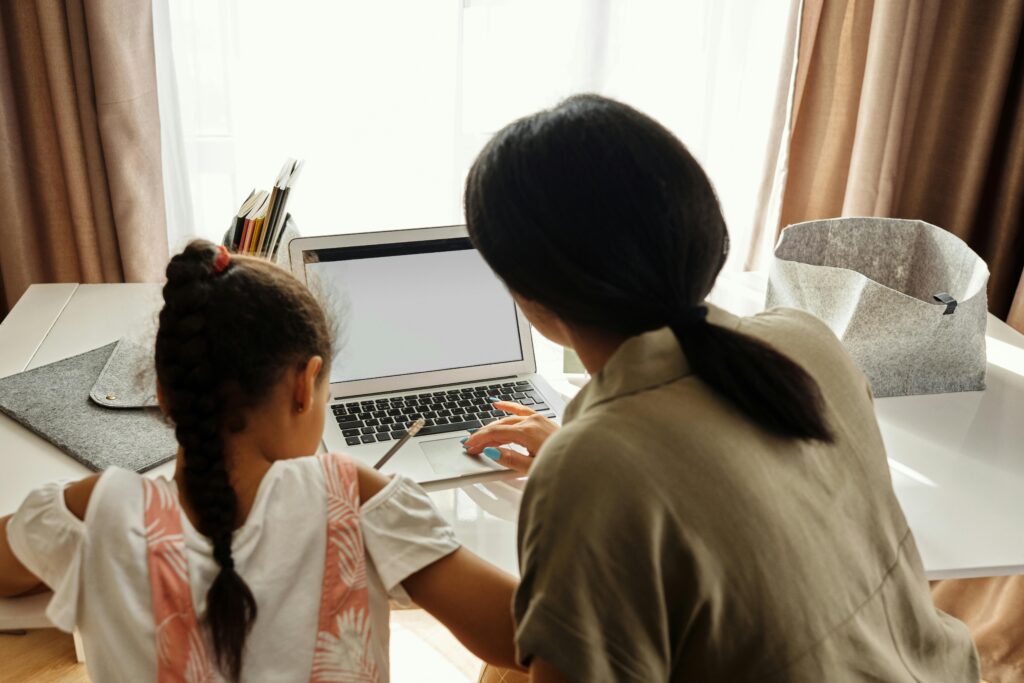Table of Contents
If your kitchen table doubles as your kid’s homework zone, dinner prep zone, and snack spill disaster zone, it’s time to rethink the setup. A dedicated homework station doesn’t just clear the clutter, it can actually make kids more likely to sit down and get things done. Learn how to create a homework station that kids actually want to use with smart organization, fun design, and motivating study tips.
The Real Goal: Get Them to Want to Use It
This isn’t about building a Pinterest-perfect study nook. It’s about creating a space that works for your kid and fits your home. A spot that feels theirs. Comfortable, distraction-free, and organized enough to keep chaos at bay without becoming a shrine to minimalism.
Let’s break down how to make one that gets used.
1. Don’t Overthink the Location

It doesn’t need to be a separate room. Most homes don’t have that luxury. But it does need to be consistent. Kids focus better when they use the same space for the same task every day.
Here’s what to look for:
- Low traffic area: Away from the TV, main walkways, or sibling chaos.
- Good lighting: Natural light is ideal, but a decent desk lamp works too.
- Some quiet: Not silent (unless your kid needs that), but less noise equals less distraction.
- Quick win: Clear out that awkward corner in the dining room or the underused end of the hallway. You’d be surprised how much can fit in a 3 ‘ x 3’ space.
2. Let Them Help Set It Up
Kids are more likely to use something they helped build. This goes beyond just picking out the chair color. Let them weigh in on:
- Where it goes
- What kind of seat they like
- What goes on the desk
- Which supplies they actually use
If your kid is younger, give them limited choices. “This chair or that one?” If they’re older, hand over more control. You’re still in charge of the final setup, but giving them a say gives them buy-in.
3. Keep It Functional, Not Fancy

It’s tempting to get caught up in aesthetics. Clean lines. Neutral colors. Maybe a pegboard and matching bins.
Here’s the truth: your kid doesn’t care. They need it to be comfortable and useful.
Essentials:
- Flat surface: A desk, small table, or even a sturdy shelf.
- Chair: Comfortable, sized for them, with good back support.
- Lighting: If you don’t have natural light, get a good LED lamp.
- Power: If they’re using a Chromebook or tablet, make sure outlets are nearby.
Optional but helpful:
- Whiteboard or corkboard for reminders
- Timer for focused work sessions
- Headphones for blocking distractions or focusing with music
You don’t need to spend a lot. Facebook Marketplace and IKEA hacks are your friends here.
4. Ditch the Clutter — But Be Smart About It

A mess kills motivation. But too clean feels sterile and uninviting. Find the balance.
Here’s the rule: Everything they need should be within reach. Nothing they don’t use weekly should stay on the desk.
Smart storage ideas:
- Desktop organizers for pens, highlighters, sticky notes
- Magazine holders for folders or notebooks
- A drawer unit or caddy for supplies they don’t use every day
- Hooks or baskets on nearby walls if floor space is tight
Pro tip: A small trash can next to the station cuts down on clutter fast.
5. Make It Age-Appropriate
A second grader needs a very different setup from a high schooler.
Younger kids might need:
- Help staying focused: use timers, short sessions, adult nearby
- Fun elements: infuse bright colors, silly erasers, reward charts
- Easy access: use lower surfaces, labeled drawers
Older kids might want:
- Privacy: give them more distance from the rest of the house
- Tech setup: a space for a laptop, a charging station
- Less clutter: cleaner, more minimal setup
Adjust the station as your kid grows. What worked last year might be useless now.
6. Give It a Personality Boost
This doesn’t mean decorating it like a classroom. It means giving the space some personality — enough that your kid enjoys sitting there.
Ideas:
- A small poster or framed print that they picked
- A funny calendar
- Their name or initials on the wall
- A small plant (surprisingly motivating)
- Their favorite color somewhere, maybe just a chair cushion or lamp
This is about making it theirs, not making it perfect.
7. Set Ground Rules And Stick to Them

Once the station’s set up, it’s easy for it to become a dumping ground for toys, wrappers, and yesterday’s worksheet. Avoid that by setting clear boundaries.
- Homework happens here. Not on the couch. Not at the kitchen counter.
- No food at the desk (except water and maybe gum for older kids).
- No phones unless they’re needed for school.
- Clean up at the end of the day, even just a 2-minute tidy.
If you’re consistent, they’ll fall into the habit.
8. Use It Yourself (Sometimes)

If your kid sees you using a similar space for focused work, like paying bills, answering emails, or fixing something small, they’re more likely to mirror that behavior. Modeling focus in a specific space sends a strong message, especially if they’re younger.
Even better? Occasionally, sit near them during homework time, working on something quietly. Not micromanaging, just being present.
9. Watch What Works, Then Tweak
This setup isn’t one-and-done. Some parts might flop. That’s fine. Watch how your kid uses the space over a week or two. Then adjust.
Maybe the chair’s too hard. Maybe they hate the lamp. Maybe they need noise-canceling headphones or a second shelf.
Treat it like a tool bench, you’ll move things around until it works right.
A Spot That Sticks
A good homework station isn’t about making school feel like work. It’s about making it feel doable. When the setup’s right, kids settle in faster, push back less, and you stop chasing pencils across the kitchen floor.
The goal isn’t perfection. It’s practicality. Create a space that makes it easier to get started, because that’s half the battle.

Hi, I’m Christian, a 43-year-old father of two and a lifelong DIY enthusiast. My workshop is where I spend countless hours experimenting, upgrading, and fine-tuning. Sharing my experiences and practical advice is my way of helping others create homes they love.




